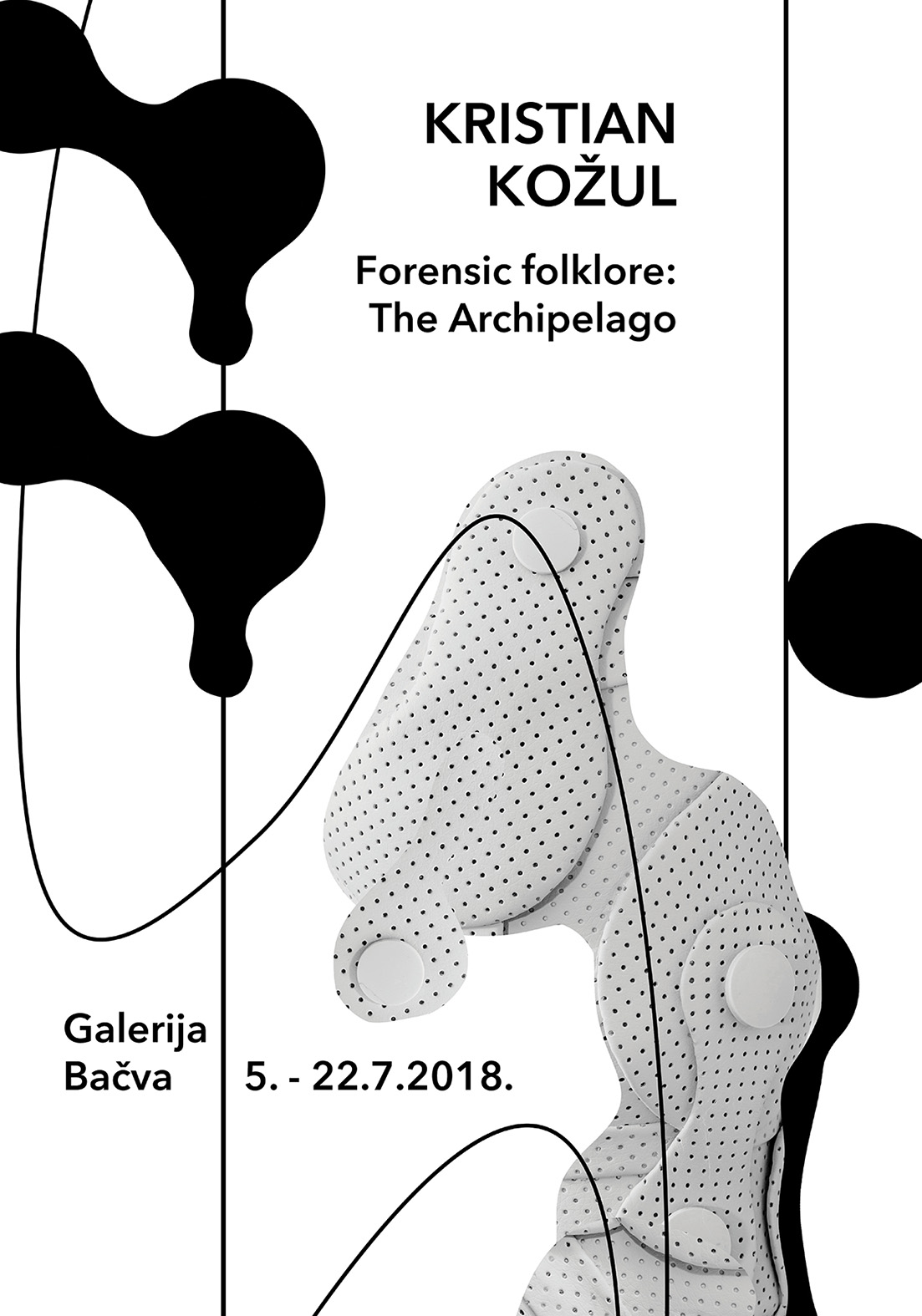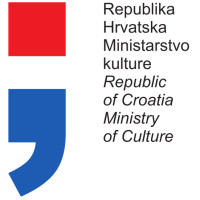Category: Events
LUKA STOJNIĆ
NEVIDLJIVOST / ONZICHTBAARHEID
Karas Gallery
July 3 – July 15, 2018
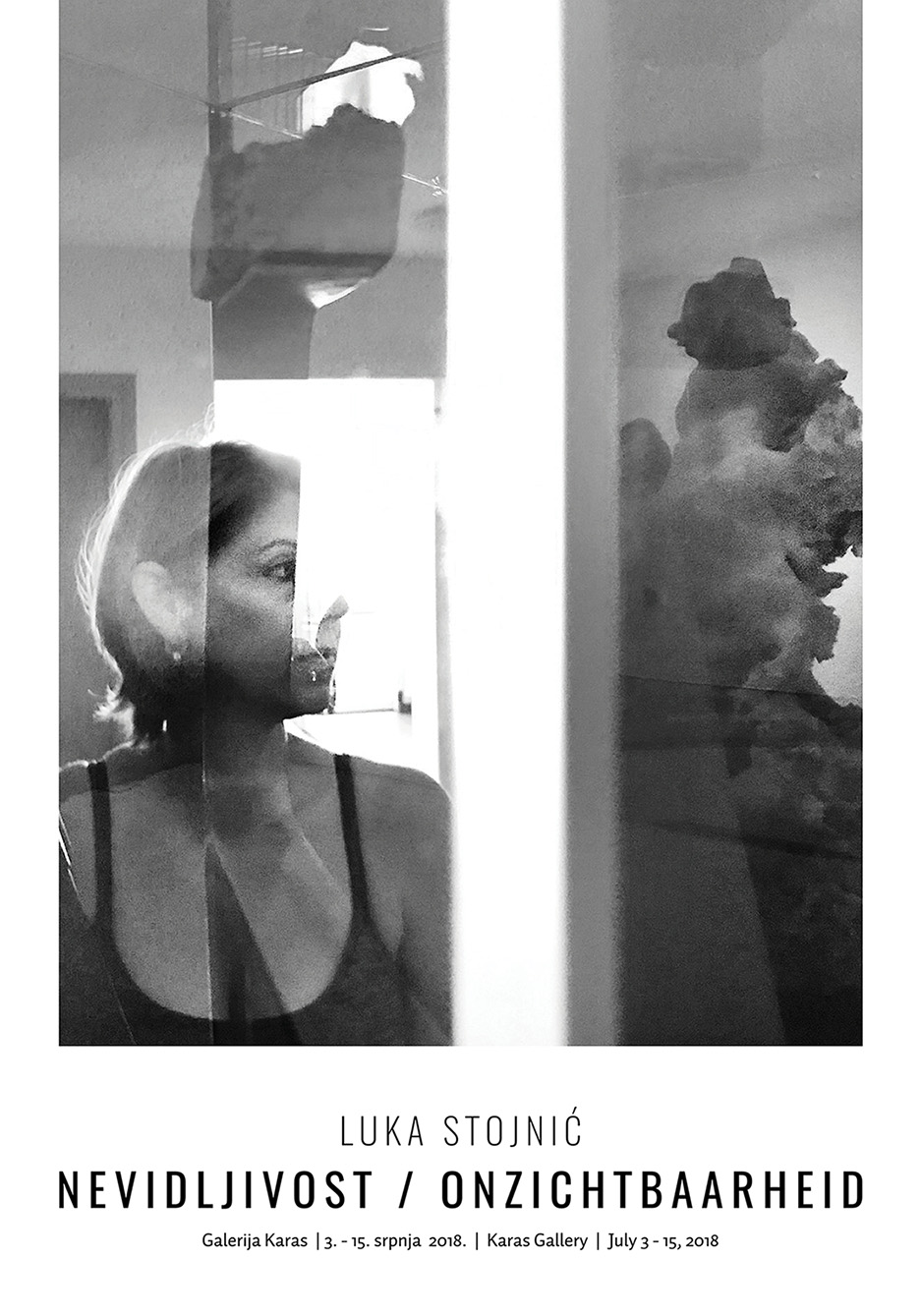
Opening of the exhibition: Tuesday, July 3 at 7pm at the Karas Gallery
Exhibition NEVIDLJIVOST / ONZICHTBAARHEID, by Luka Stojnić will be opened on Tuesday, July 3 at 7pm at the Karas Gallery (Zvonimirova 58).
“What lies beyond the horizon as promise for a better tomorrow? What God can we expect to find when descending all the way back to Byzantium, only to learn about his disappearance by (re)presentation?
At the intersection between hope and dismay, Luka Stojnic is offering us a new possibility for re-connecting with the nature (of things) on our own terms, by outlining an in-between space. A possibility for understanding and transformation not remote neither simulated, but available here and now, residing in the interval between the manifestation of the unconsciousness as an emotional act, and the perpetuation of the illusion of understanding as a (self)reflection.
Between the future (horizon as emotion) and the past (history as image proliferation), the only productive option left for grasping the world seems to be acknowledging and embracing the NOW as the real realm – the best place to learn how we can live a fulfilled and meaningful life with ourselves. All we have to do is just to taste a banana.”
From preface, written by Serban Cornea, Copenhagen – Zagreb 2018
![]()

Supported by:
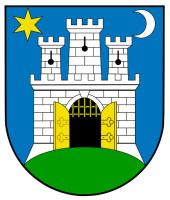


Working hours:
Wednesday and Friday: 9am to 3pm | Thursday: 3pm to 7pm | Saturday and Sunday: 9am to 12am
Mondays, Tuesdays and holidays: closed.
The exhibition will remain open until July 13, 2018
MARIJA ANČIĆ
Traps
Karas Gallery
June 5 – June 17, 2018

Opening of the exhibition: Tuesday, June 5 at 7pm at the Karas Gallery
Exhibition Traps, by Marija Ančić will be opened on Tuesday, June 5 at 7pm at the Karas Gallery (Zvonimirova 58).
“In my work, I deal with personal issues, my own problems and the question of identity. I try to express negative emotions: fear, anxiety, lack of confidence, etc. through drawings or animation – GIF. GIF is an interesting medium because its main feature is the infinite repetition – the loop, and the states I’m talking about are also running in circles, in repeated cycles. In addition, GIF is a format that is present in modern communication because it transmits emotions quickly and easily. In that I recognized a medium for reflection and exploration. So I take one action and animate it to form a loop. The endless repetition at first glance makes this frightening and morbid act absurd, giving it a humorous aspect. These actions are exaggerated and overdramatic, as I try to illustrate this elusive moment of fear, which is terrible and paralyzing at one moment, and already funny in the next. At the same time this repetition turns act into a state, my characters exist in these impossible and permanent spaces and somehow persist, survive.
The trap is, in it’s nature, a catching and capturing device, whether it is a hidden trap, bait, or a fraud, the victim does not know that it fell into it until it is too late. My traps are exaggerated caricatures like traps from cartoons, movies and pop culture (a huge bear trap, a secret door in the floor and muck) and they represent the feeling of anxiety, insecurity, imprisonment, alienation. The effect created by the loop is a surreal situation in which the character is in the trap forever, without the possibility to get out of it, however, it is aware of the traps and its dangers and successfully avoids it. The trap is in a similar position because despite the infinite attempts, it fails to fulfill its function. The trap and the character reached a stalemate, an unusual symbiosis.”
Marija Ančić
ABOUT THE ARTIST
Marija Ančić was born in Sarajevo. She graduated Conservation-Restoration from Academy of Arts in Split, in 2005 and Sculpture in 2010. Besides four solo exhibitions, she participated on different group exhibitions and festivals in Croatia and abroad. She was the finalist of Radoslav Putar Award in 2016. She lives and works in Zagreb.
Karas Gallery program is financially supported by The Croatian Association of Visual Artists (HDLU).
![]()

Working hours:
Wednesday and Friday: 9am to 3pm | Thursday: 3pm to 7pm | Saturday and Sunday: 9am to 12am
Mondays, Tuesdays and holidays: closed.
The exhibition will remain open until June 17, 2018
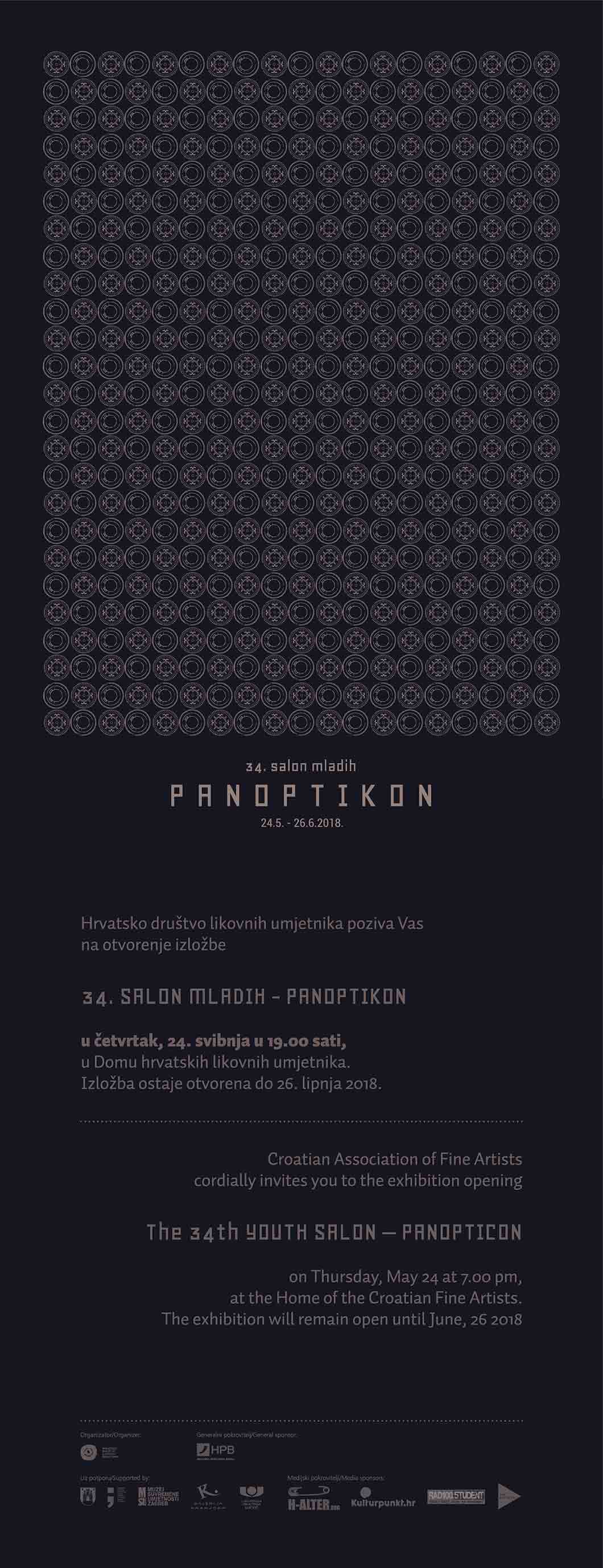
Opening, May 24, 2018, at 7pm (Home of HDLU)
The 34th YOUTH SALON – PANOPTICON, developed around the concept by Mirna Rul, will open on Thursday, May 24, 2018, at 7.00 PM in the Home of Croatian Fine Artists on Trg žrtava fašizma 16.
The exhibition will remain open until June 26, 2018.
We prepared rich side program at the opening as well as music (from 20:30) performed by Martina Gucić (Mapalma), a producer and DJ from Zagreb.
She is a DJ and producer from Zagreb making beats since 2010. She has performed with Cakes da Killa, Palmistry and Elysiu Crampton; her mixes could be heard on popular NTS Radio (for Classical Trax) and Rinse FM (for MAJIA radio). She has also made one of the first mixers for the SISTER collective. She defined her recognizable sound on a debut EP, released at the end of 2017 for the Vienna label Ashida Park. Her “Nightcap” EP could be described, in the widest sense, as an experimental club music inspired by grime, r&b, baile funk, dancehall, ballroom and reggaeton.
https://soundcloud.com/mapalma
More about the concept of 34th Youth Salon read here.
SIDE PROGRAM
24.5.2018. 12:00 (Galerija Šira, Preradovićeva 13, Zagreb)
Opening of the exhibition Venientes – those to come
25.5. Reli po galerijama 17:00 / 17:30
exhibition tour with the curator of the Salon, Mirna Rul
5.6. 2018. 18:00 (Club HDLU)
lecture by Tihana Puc – Youth Salon Cartography: award-winning Artists Network
In the Club HDLU, for the entire duration of the Salon, you can see the interactive installation Youth Salon Cartography: award-winning Artists Network – a continuous project of collecting data about female and male artists who were awarded between 1968 and 2016 at the Youth Salon, and is visualized as a network, enabling remote reading of the Youth Salon and exploring the way artists are connected and shared through time and institutional space.
Concept: Tihana Puc
Visualization and Technical Performance: Mihael Giba
8.6. 2018. 18:00 (Club HDLU)
talk with Beti Žerovc: Is art just for privileged ones?
12.6. 2018. 18:00 (Club HDLU)
round table organized by Institut za povijest umjetnosti* – 50 Years of Youth Salon
head of the round table: Ivana Mance
*as part of the 150th anniversary of HDLU
15.6.2018. 18:00
exhibition tour with the curator of the Salon, Mirna Rul*
*as part of Zagreb Design District Festival
20.6. 2018. 18:00 (Club HDLU)
discussion panel Big Data and the Art world
head of panel discussion: Lena Disopra
20.6. 2018. 19:00 (MSU, Avenija Dubrovnik 17, Zagreb)
Opening of the solo exhibition Time Capsule, by Miran Šabić, winner of the MSU prize at the last Youth Salon. The exhibition remains open until July, 11 2018.
26.6.2018. 18:00
Catalogue promotion and awards ceremony.


Opening, May 24, 2018, at 7pm
The 34th YOUTH SALON – PANOPTICON, developed around the concept by Mirna Rul, will open on Thursday, May 24, 2018, at 7.00 PM in the Home of Croatian Fine Artists on Trg žrtava fašizma 16. The exhibition will remain open until June 26, 2018.
The Youth Salon is traditionally held every two years, and this is its 34th edition. On the occasion of HDLU` s 150th anniversary, as well as the 50th anniversary of the Youth Salon, this year’s Salon will, among other things, mark the continuity of their existence.
A building circular… The prisoners in their cells, occupying the circumference—The officers in the centre. By blinds and other contrivances, the Inspectors concealed… from the observation of the prisoners: hence the sentiment of a sort of omnipresence—The whole circuit reviewable with little, or… without any, change of place. One station in the inspection part affording the most perfect view of every cell.
Proposal for a New and Less Expensive mode of Employing and Reforming Convicts
Jeremy Bentham
Back in 1979, artists gathered around Radna zajednica umjetnika Podroom presented a Contract on the Conditions of Public Presentation of Artworks, which required a better position of artists in relation to institutions, pointed to the need for financial appreciation of artistic work, and warned of the problem of aesthetic and artistic values pre-defined by institutions.
More than ever, artists have been relying on institutional funding (scholarships, royalties, state / city incentives …); artworks are, as a rule, produced for institutions, adapted to them, and shaped accordingly aswell as depended on them. Art is contextualized and politicized practice, while the field of art is the space for eternal negotiation and conflict between various actors (Bourdieu) [2] – artists, schools / academies, galleries, museums, markets, professionals, etc. and only the one who has “habitus “, Ie,”plays” by the rules of the game which, again, create institutions themselves. Beti Žerovc [3] draws a parallel between the exhibition of contemporary art and religious ritual, where the curator, representing “supreme priest”, creates an ideological foundation for promoting the interests of financial and cultural centers of power, which, on the other hand, allow a privileged position within the institutions. Networking and connectivity (both of curator and that of the artist) with relevant actors from the cultural and political milieu represent conditio sine qua non of success, good positioning, survival on the cultural-artistic scene, and stable material status. However, these positions of power differ considerably if we observe the world or the Croatian context. In the world context, there are different platforms – Artfacts.com, MutualArt.com, Artist Pension Trust etc; artists are exposed to panoptique view and analysis, and are valorized based on algorithmic calculations and risk management in accordance with the interests of neoliberal power centers. The evaluation and performance prognosis are based on the number of exhibits and the relevance of exhibition spaces they exhibit in, number of sales, popularity among members and media presence. Higher ranking also provides easier access to institutions, finances, and relevant world art events. But when it comes to Croatian artists, few of them are present on these platforms; most of them create within their micro community, with minimal production resources and almost voluntary engagement. The more insecure position makes them dependent on different national power centers. Local institutions are their panoptic. Being exposed to “supervision and punishment” [4], which often manifests itself simply as lack of interest or lack of “awards”, testifies to the systematic tendencies of precarization of their position in Croatian society.
The works exhibited within this year’s Youth Salon refer to the concept of panopticon in its various metaphorical meanings, and depending on the treatment of the very concept, we can split them into several groups. In the first group there are artists who recognize panopticon in the society of control and their works are critically related to the supervisor, but also the punishment (also the one that manifests itself as a lack of awards), whether it is Croatian cultural and artistic institutions (Barišić, Tomasović, Popijač, Lovrec), media (Sladetić) or surveillance through surveillance cameras (Miloš). The escape from this kind of control society allows Drinković‘s Identity Eraser, while Hršak, on the other hand, is a little nervous about leaving the safe shelter of the Academy of Fine Arts. Bachler, Ivković and Vernić question the relationship between the institution, the artist and the recipient – Bachler exposes the work that is not a priori art work, expecting the institution to declare it, Ivković challenges any attempt to interpret the work by both the institution and the observer, while Vernić ironically relations towards the “elitization of art”. The sharp criticism of the political power centers whose misperception and negligence have led to the destruction of the industry, but also the regios as a whole, we read in the works of Vuković and Matoković, and the illegal activities of local powers, with the aim of obtaining financial gain, in Stojićević‘s work Negligence of city authorities in abandoned areas is criticized by Pilj, the extensive construction of Zagreb fountains is discussed by Vanda Kreutz, and the relations between periphery and center by Giba and Rogić. Kovačić and Koruga both refer to Virgina Woolf in their works, apostrophizing the question of the female artist position in Croatia in relation to their male counterparts, in terms of even more pronounced precarization of their position. The need for “adjusting” to diverse positions of power is awakened in Novak´s work, who tries to “balance between the multiple roles” that the artist has to play in order to survive in the art world. Also, Leko “stopped worrying and learned how to love the system,” Pongrac sees the possibility of growth in tight, nearly prison terms, and Stojanović learns how to adjust to circumstances by watching the world around her. More or less subtle subversion of this kind of reality is read in the works of Meić, Jakuš and Marić, and the anxiety about the reality we can not escape, just like Bentham’s panopticon, overwhelmes us from the first look at the works of Matić and Ančić. Existential anxiety and dehumanization is also present in the work of Ivana Tkalčić, whose hyperreal world is an utopia for digital information but also a prison for man.
Tudek and Mihaljević approached the story almost crazy and somewhat ironicallay, by approaching the panopticon on the form level rather than the content, referring precisely to the circle as a building element of its architecture.
Meštrović’s Pavilion itself, with its circular form will, during the course of Salon, invoke Bentham’s panopticon, whereby young artists and their works will be exposed to a panoptitic “inexorable view of the future” [5] of the Croatian art.
Mirna Rul, curator of the 34th Youth Salon
In keeping with the concept Panopticon and the propositions of the open call, the jury of experts including Mirna Rul, Curator of the 34th Youth Salon; Ida Blažičko, Artist and Representative of the Organizing Committee of the 34th Youth Salon; Tihana Puc, art historian, Vladimir Tatomir, independent curator and Igor Ruf, artist, have selected 24 artists:
Maja Bachler, Maša Barišić, Vitar Drinković, Tomislav Hršak, Tea Ivković, Valerija Jakuš, Marija Koruga, Anja Leko, Kristina Marić, Marija Matić, Vida Meić, Niko Mihaljević, Anita Miloš, Vladimir Novak, Filip Pilj, Kristina Pongrac, Ana Sladetić, Josipa Stojanović, Lana Stojićević, Ivana Tkalčić, Vice Tomasović, Ivan Tudek, Vendi Vernić, Nebojša Vuković,
while the following artists were invited by the curator of 34th Youth Salon:
Marija Ančić, Ana Kovačić, Vanda Kreutz, Jelena Lovrec and Mario Matoković.
Authors invited to participate in Art Lab are: Mihael Giba and Frane Rogić, and Petar Popijač and Maja Flajsig.
[1] Archives of conceptual and neo-avant-garde art practices, Podroom, http://digitizing-ideas.org/hr/istrazi/podroom
[2] Pierre Bourdieu, The Rules of Art, Stanford University Press, 1995
[3] Beti Žerovc, When Attitudes Become the Norm, Društvo Igor Zabel za kulturo in teorijo (Ljubljana) & Archive Books (Berlin), 2015.
[4] Michel Foucault
[5] Željko Kipke, „Neumoljiv pogled u budućnost“, exhibition in SC Gallery, 2014.
Side program of the 34th Youth Salon coming soon!

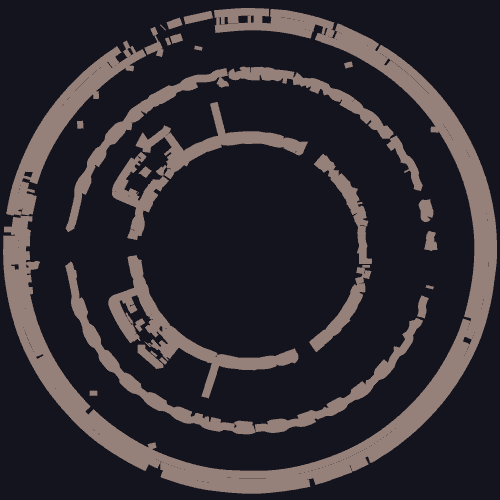
HDLU – Croatian Association of Fine Artists announces
the ANNUAL OPEN CALL FOR EXHIBITING in 2019
within the program of Bačva Gallery, Prsten Gallery, PM Gallery and Karas Gallery
The rights to participate in the call have all the artists and experts in the field of fine arts.
THE APPLICATION CAN INCLUDE:
- exhibition proposals
- educational projects
- international programs, inter-institutional and regional collaborations
APPLICATIONS SHALL BE SUBMITTED BY COMPLETING THE APPLICATION FORM AND SUBMISSION OF REQUIRED DOCUMENTS. All the fields in the application form which are marked with * are mandatory. Application, which is not fully completed or does not contain the required documents, will not be considered.
REQUIRED ATTACHMENTS TO THE APPLICATION:
– required examples of the artworks / exhibition / project
images/sketches of the work in JPG format up to 700kb per image
digital Video in DVD PAL or mp4 format (if applicable)
sound works in mp3 format (if applicable)
etc. (provide materials as much as possible for better insight into the project)
– CV (please download CV FORM here, fill it out and upload it to the on-line application form)
project applicant’s CV
artist(s)’ CV (if different from the applicant)
– spatial plan
on the gallery blue print (if applicable)
– for international projects and collaborations
list of countries and institutions engaged with the project
confirmation letter from the international institutions
SUBMISSION OF APPLICATION:
– How to apply
Applications should be submitted through on-line application form only.
– Application deadline
June 10, 2018, midnight
Applications received after the deadline will not be considered.
– Contact for all issues related to the galleries and / or application form:
Galleries: Mia Orsag, galerije.hdlu@gmail.com, 099 2642 564
For international and/or educational projects: Miran Jurić, miran.juric@hdlu.hr
– Applications that do not contain the required fields filled or do not have the required documents will not be considered.
COMMUNICATION:
During the selection process, process of applying for funds and final realization of the program, HDLU will communicate only with the project applicant according to the contacts listed in the application form.
COPYRIGHTS:
HDLU reserves the right to use the selected applications for promotional material of the yearly program in all types of media, catalogues, invites, web and Facebook pages of HDLU.
SUBMISSION CONFIRMATION:
Please contact us in case if you don’t receive submission confirmation e-mail from galerije.hdlu@gmail.com within two working days from the submission.
ATTACHMENTS:
- EXAMPLE OF A FILLED APPLICATION
- APPLICATION FORM FOR EXHIBITING IN 2019
- CV FORM
- FLOOR PLANS OF THE GALLERY SPACES: Bačva Gallery, PM Gallery, Prsten Gallery, Karas Gallery
- VISUALIZATION OF GALLERY SPACE

